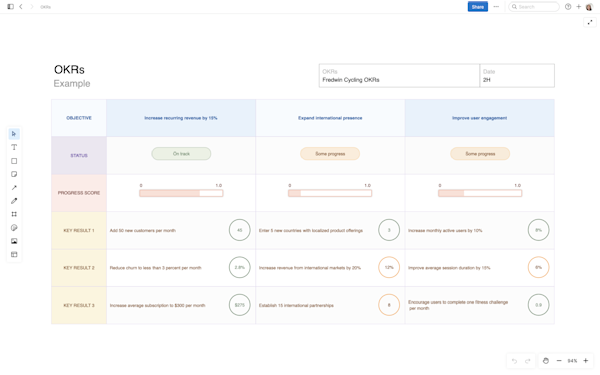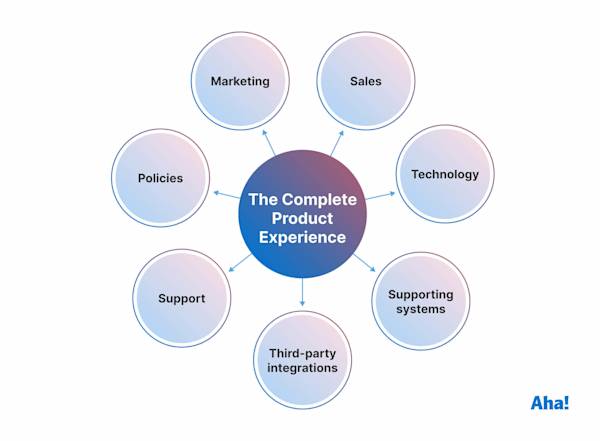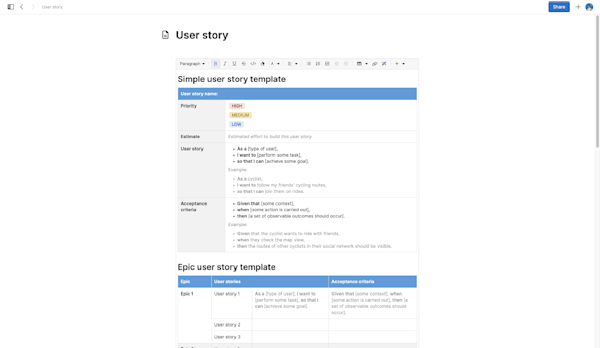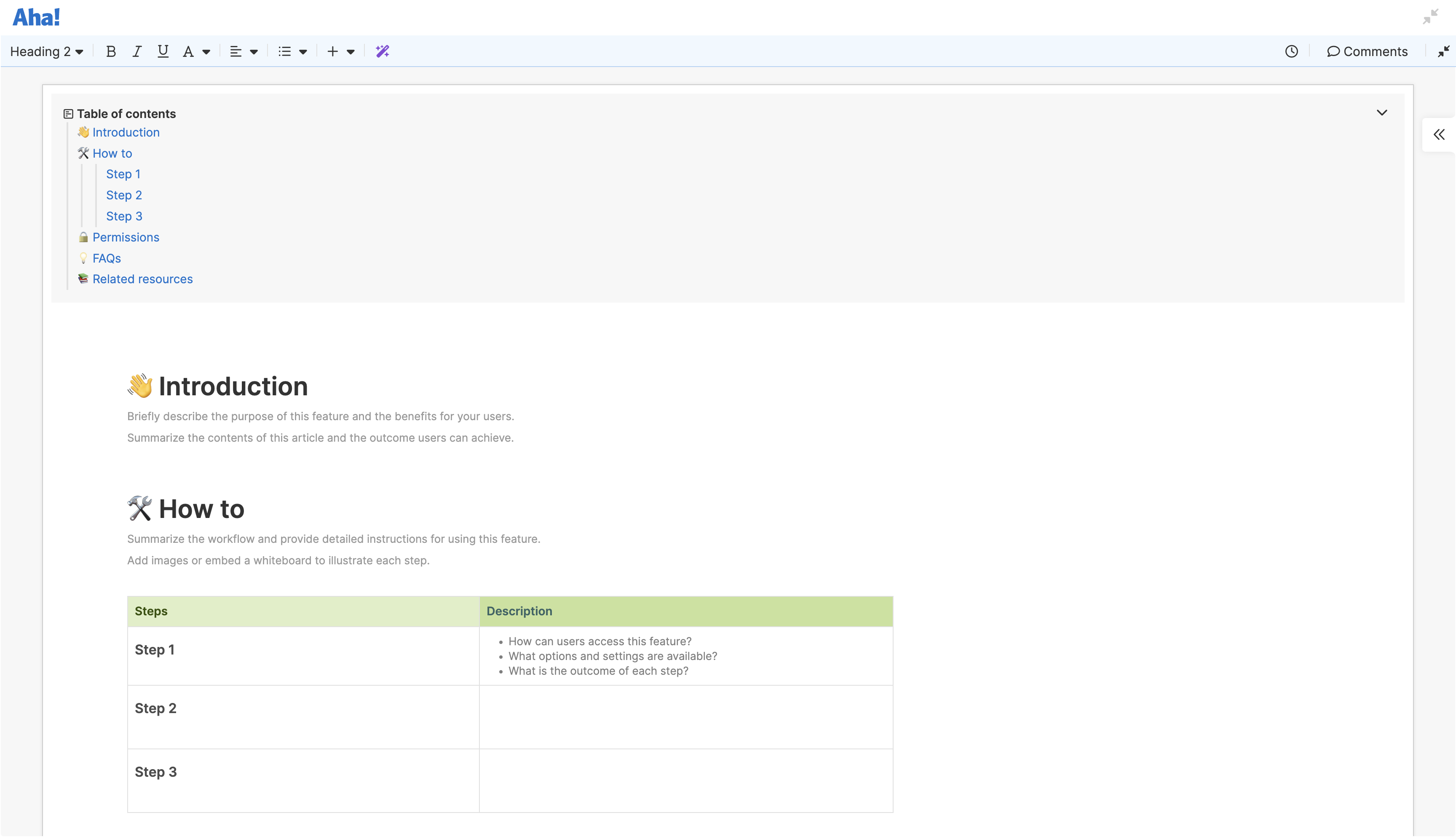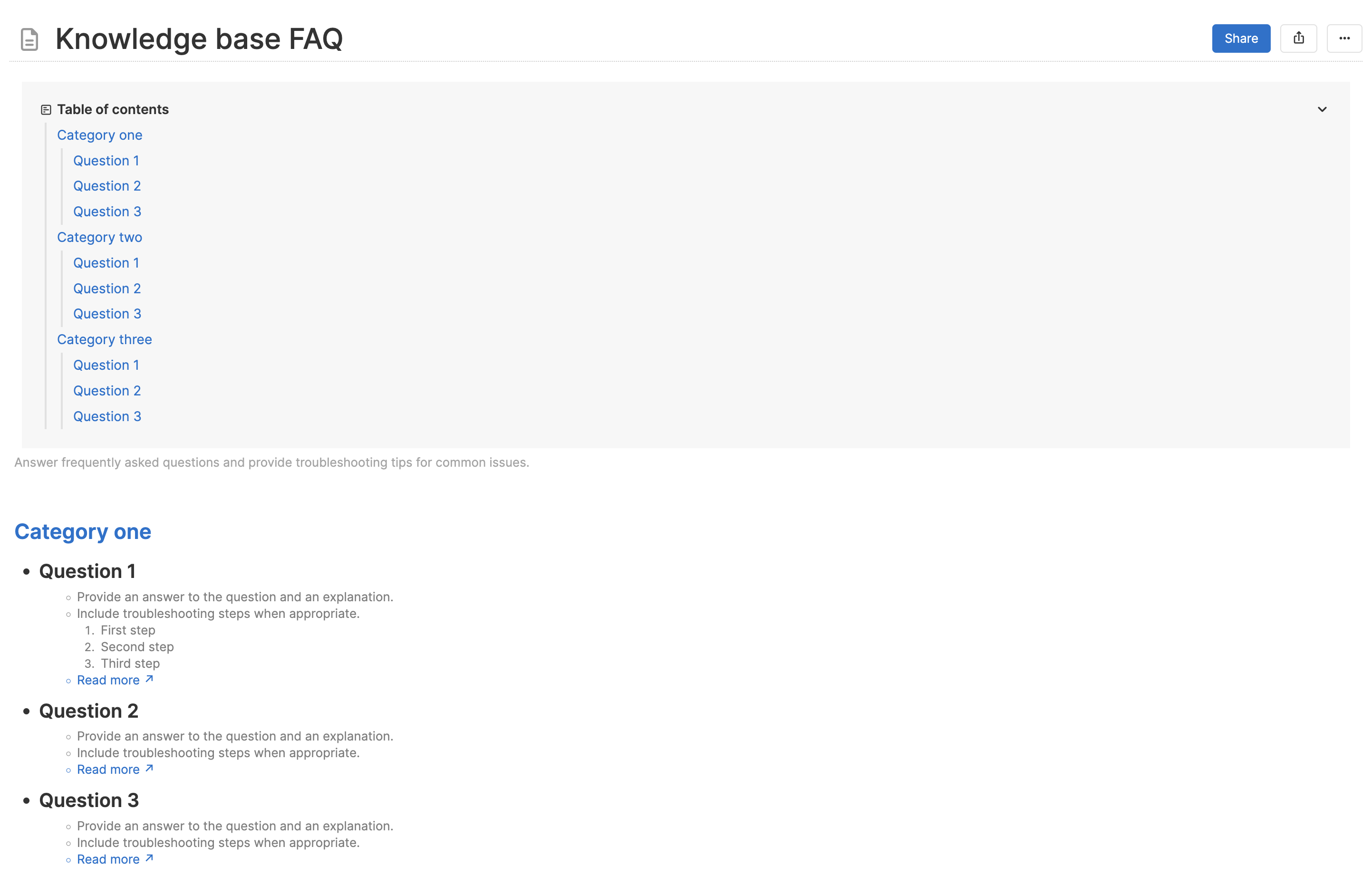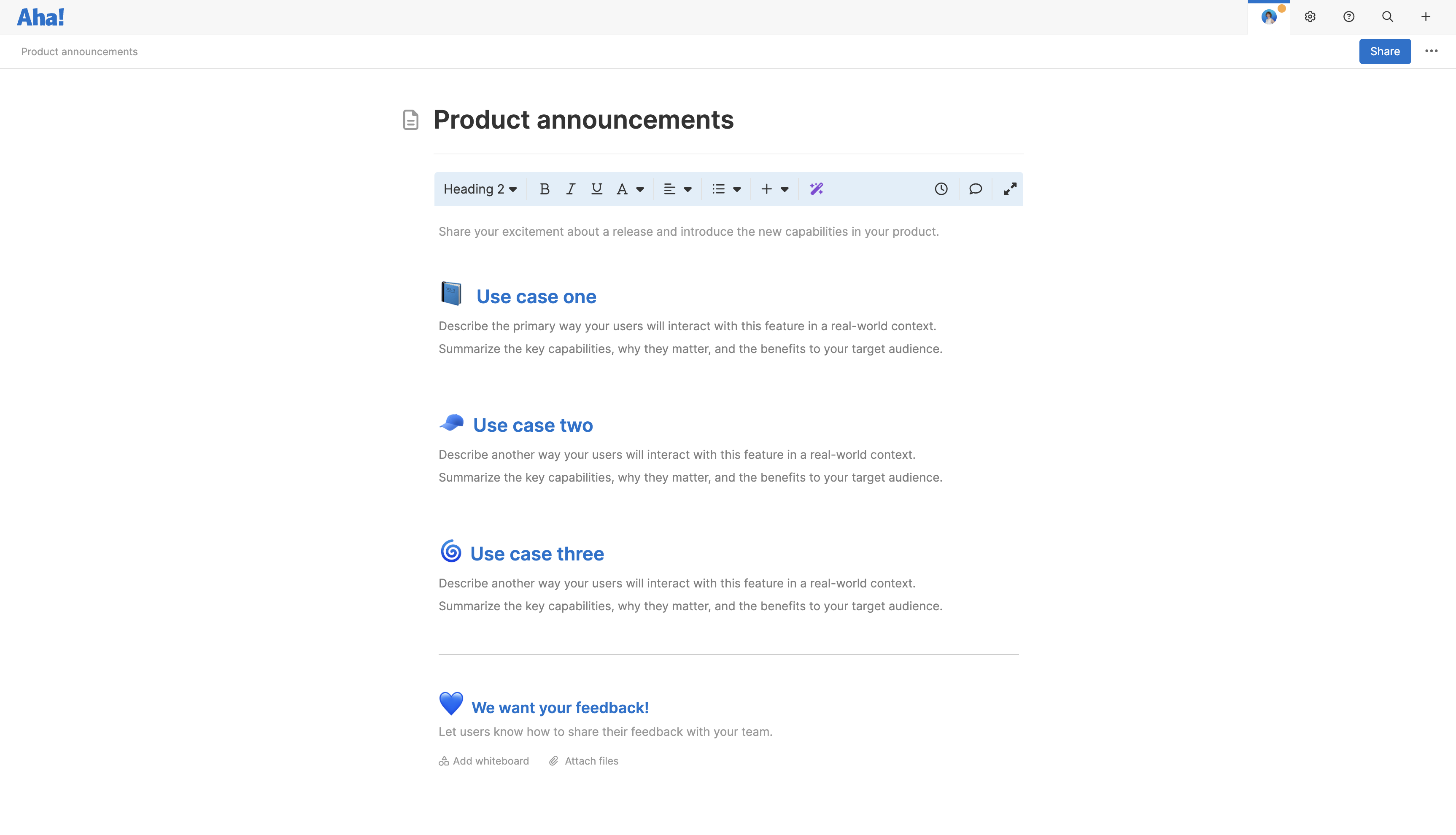What is product documentation?
A practical guide to creating, organizing, and maintaining product documentation for teams and customers
Last updated: September 2024
Learn what product documentation is, what it includes, and how internal and external docs support product teams, developers, and customers — plus templates to help you get started. |
Product documentation refers to any material that describes your product's features, functions, and usage. You might also call it a hub, help center, or product wiki. It includes everything from user guides and release notes to best practices for the product team.
Product documentation is a valuable resource for anyone involved with the product:
Product managers use documentation to communicate requirements and align stakeholders, ensuring the product meets it goals.
Developers rely on it to understand new feature requests, write consistent code, and troubleshoot issues.
Customers turn to documentation to understand how the product works and how to use it effectively.
Manage your product documentation in Aha! Knowledge — try it for free.
Well-crafted product documentation serves as a source of truth, providing clarity across teams and users. It equips everyone with the knowledge they need to interact with the product confidently. So what exactly is included in product documentation? Keep on reading for answers to these questions and more. Use the following links to jump ahead to a specific section:
What does product documentation include?
At Aha! we use the term "document" to refer to just about any type of information. For instance, an internal knowledge base at a software company houses resources that cross-functional teams need to plan, build, and deliver the company's products, as well as team-specific notes and onboarding materials. An external knowledge base includes anything customers need to get started and make the most of your software. (More on internal vs. external product documentation below.)
In both examples, the knowledge you share can take several forms depending on your audience and what you need to communicate. Product documentation can look like:
User guides, API documentation, technical specifications, release notes, meeting agendas
System architecture diagrams, process flows, data models, customer journey maps
Media (audio, video, gif)
Tutorial videos, product demos, recorded webinars, animated how-tos
We use all of the above in our product documentation for internal and external folks. And centralize it all within our own knowledge base software specifically designed for product teams.
